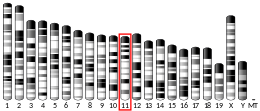**Mechanism of Angiotensin-converting enzyme (ACE):**
– ACE is a zinc metalloproteinase.
– The zinc center catalyzes peptide hydrolysis.
– ACE can be inhibited by metal-chelating agents.
– The E384 residue is mechanistically critical.
– The function of the chloride ion in ACE is complex and debated.
– ACE inhibitors inhibit proteases cleaving Ang I to form Ang II.
– ACE inhibitors increase levels of bradykinin.
– ACE inhibitors affect bradykinin degradation.
– ACE inhibitors have physiological effects in the cardiovascular system.
– ACE inhibitors may slow Alzheimer’s disease progression.
**Genetics and Disease Relevance of ACE:**
– The ACE gene encodes two isozymes.
– The somatic isozyme is expressed in various tissues.
– Brain tissue ACE enzyme is involved in local RAS.
– ACE inhibitors are widely used in treating high blood pressure and heart failure.
– Inhibiting ACE leads to decreased angiotensin II formation and bradykinin metabolism.
– ACE inhibitors have debated effects on Alzheimer’s disease.
– ACE inhibitors may reduce the risk of Alzheimer’s in certain populations.
– The ACE enzyme converts Aβ42 to Aβ40 in brain tissue.
**Pathological Implications of ACE Levels:**
– Elevated ACE levels are found in sarcoidosis and other diseases.
– ACE levels are decreased in renal disease and obstructive pulmonary disease.
– ACE levels play a role in diagnosing and monitoring various conditions.
**Influence of ACE Gene Polymorphism on Athletic Performance:**
– The ACE gene has over 160 polymorphisms.
– Different genotypes of ACE influence athletic performance.
– The rs1799752 I/D polymorphism affects ACE protein levels.
– D-allele carriers have higher blood pressure during exercise.
– I-allele carriers show enhanced endurance performance.
**Historical and Additional Information on ACE:**
– Enzyme reported by Leonard T. Skeggs Jr. in 1956.
– Crystal structure of human testis ACE solved in 2002 by R. Natesh, S. Schwager & E. Sturrock.
– Mainly located in the capillaries of the lungs and found in endothelial and kidney epithelial cells.
– Additional concepts related to ACE include ACE inhibitors, Angiotensin-converting enzyme 2 (ACE2), Hypotensive transfusion reaction, and the Renin–angiotensin system.
Angiotensin-converting enzyme (EC 3.4.15.1), or ACE, is a central component of the renin–angiotensin system (RAS), which controls blood pressure by regulating the volume of fluids in the body. It converts the hormone angiotensin I to the active vasoconstrictor angiotensin II. Therefore, ACE indirectly increases blood pressure by causing blood vessels to constrict. ACE inhibitors are widely used as pharmaceutical drugs for treatment of cardiovascular diseases.
 Angiotensin-converting enzyme monomer, Drosophila melanogaster | |||||||||
| Identifiers | |||||||||
|---|---|---|---|---|---|---|---|---|---|
| EC no. | 3.4.15.1 | ||||||||
| CAS no. | 9015-82-1 | ||||||||
| Databases | |||||||||
| IntEnz | IntEnz view | ||||||||
| BRENDA | BRENDA entry | ||||||||
| ExPASy | NiceZyme view | ||||||||
| KEGG | KEGG entry | ||||||||
| MetaCyc | metabolic pathway | ||||||||
| PRIAM | profile | ||||||||
| PDB structures | RCSB PDB PDBe PDBsum | ||||||||
| |||||||||
Other lesser known functions of ACE are degradation of bradykinin, substance P and amyloid beta-protein.






